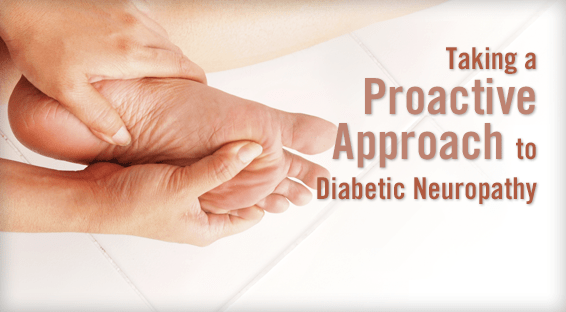According to recent estimates, diabetic neuropathy accounts for about $50 billion in both direct and indirect costs associated with diabetes in the United States. “Diabetic neuropathy is one of the most common microvascular complications of diabetes,” says Cecilia C. Low Wang, MD, FACP. “It’s associated with major morbidity and can significantly reduce quality of life for patients.” Diabetic neuropathy occurs in about 60% of patients with diabetes at some point during their lifetime and is more common in those living with diabetes for a number of years. The condition is characterized by impairment of peripheral nerve axons, particularly in the limbs. Diabetic neuropathy often results from chronic hyperglycemia, regardless of the type of diabetes.
There are several different types of neuropathy that patients with diabetes may experience, but the most common forms are distal symmetric or sensorimotor diabetic peripheral neuropathy (DPN) and autonomic neuropathy. With DPN, patients typically describe their symptoms as tingling, pain, numbness, or weakness that starts out in the feet and progresses to the hands at a much later stage. With autonomic neuropathy, orthostatic hypotension, blood pressure dysregulation, urinary retention, erectile dysfunction, and gastroparesis are among the clinical consequences of autonomic dysfunction. There can also be significant hypoglycemia unawareness.
Diagnostic Considerations
“Early recognition and appropriate management of neuropathy in patients with diabetes are important,” says Dr. Low Wang. She notes that a number of treatment options are available for symptoms of DPN but adds that these therapies do not treat the underlying mechanisms of the disease. The American Diabetes Association notes that up to 50% of DPN cases may be asymptomatic. These patients are at risk for insensate injuries to their feet.
“Patients with diabetes should be screened annually for diabetic neuropathy,” says Dr. Low Wang (Table). “Typically, this requires combining more than one test to increase sensitivity for detecting DPN. This takes a little more time, but it’s an important part of diabetes care.” Loss of sensation to the 10 gram monofilament and reduced vibration perception can help predict the development of foot ulcers. Importantly, causes other than diabetes should be considered in patients with neuropathy, particularly when it is severe.
Autonomic neuropathy—cardiovascular autonomic neuropathy, in particular—is independently associated with cardiovascular mortality. Specific treatments for underlying nerve damage are currently unavailable. “The optimal approach to management is to provide treatments that improve glycemic control,” Dr. Low Wang says. However, while this may prevent or slow progression, it will not reverse neuronal loss. Diabetic autonomic neuropathy has also been associated with genitourinary tract disturbances. Clinicians are recommended to evaluate bladder dysfunction for those with diabetes who have recurrent urinary tract infections, pyelonephritis, incontinence, or a palpable bladder.
Managing Symptoms
Effective symptomatic treatments are available for some manifestations of DPN and autonomic neuropathy (Figure). “The first step in managing patients with DPN should be to optimize glycemic control and avoid extreme blood glucose fluctuations,” says Dr. Low Wang. “Neuropathic symptoms can improve by optimizing glucose levels.” Several pharmacologic treatments may also be beneficial in patients with symptoms of painful DPN. Many agents have been examined in systematic reviews and meta-analyses of clinical trials, but only a couple of medications have received FDA approval for treatment of painful DPN.
Treatments for autonomic neuropathy are different from those for DPN. For example, gastroparesis may improve with dietary changes and prokinetic agents. “The interventions used for patients with autonomic neuropathy depend on patients’ clinical signs and symptoms,” Dr. Low Wang says. These interventions can have a positive impact on quality of life.
Prevention Is Key
Managing diabetic neuropathies can be difficult once the disease progresses. Dr. Low Wang recommends that clinicians be proactive about preventing diabetic neuropathies by encouraging positive lifestyle changes and prevention strategies. “Keeping blood glucose levels in the target range while minimizing hypoglycemia is important,” she says. “Maintaining a healthy diet and controlling portion sizes, incorporating both lifestyle and regular physical activity into one’s daily schedule, and taking medications—if needed—are all important preventive steps to encourage.”
The role of self-care is also important for managing diabetic neuropathies, according to Dr. Low Wang. “Patients should be encouraged to report any diabetic neuropathy symptoms,” she says. “They should inspect their feet daily and talk to their healthcare provider if they notice ulcers or other worrisome findings. Wearing socks and properly fitted shoes is also important. Ultimately, healthcare providers and patients should discuss the potential for diabetic neuropathy at every visit so that it’s identified and treated early. Prevention can help avoid more significant problems.”




 TimH
TimH